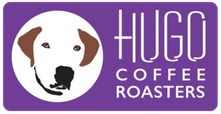The Incredible History of Coffeehouses
The first coffee shop in history was in Constantinople, modern-day Istanbul. In 1475, a shop called Kiva Han opened and sold coffee to the public. Prior to this, coffee was a staple throughout the eastern world, particularly in North Africa and the Arabian peninsula.
Coffee was introduced to Europe nearly a century later when the Ottoman Empire laid siege to Vienna. After two weeks, the Ottomans were forced to withdraw but left their coffee behind. In the aftermath of the siege, Franz Georg Kolschitzky, a Polish nobleman, used the abandoned coffee beans to start the first coffee shop in Vienna. In the century after, coffee’s popularity spread across the European continent.
The café did not reach France and England until the 17th century but gained popularity quickly. In Paris, the first café was founded in the 1640s, though hundreds more were created over the following decades. The Parisian café closely resembled the coffee shop of modern America. These establishments were frequented by individuals with disposable income and became a central social hub for exchanging news, discussing politics, and chatting sociably.
In England, coffee shops developed similarly, occasionally called “penny universities” due to the low cost of entry and breadth of information available within them. Intellectuals such as Voltaire, Rousseau, Benjamin Franklin were all frequent visitors of coffee shops in the 17th and 18th centuries. The political discussion was so prominent that the shops were focal points for revolution and political rebellion.
The Old World coffee shop and its ties to social unrest temporarily led to social dissatisfaction with coffee shops and coffee culture, at least among some parts of society. King Charles II said in his Proclamation for the Suppression of Coffee Houses that the coffee shops “have produced very evil and dangerous effects…scandalous reports are devised and spread abroad to the Defamation of His Majesty’s Government, and to the disturbance of the Peace and Quiet of the Realm; his Majesty hath thought it fit and necessary, that the said Coffee Houses be (for the Future) put down and suppressed…”
Between this and some religious objections to the use of coffee, coffee shops temporarily fell out of popularity in many parts of Europe. In spite of efforts to prohibit coffee, its popularity and its potential for profit couldn’t be contained for long.
The American coffee house began in the same tradition as its European counterparts. Colonial coffee shops were centers for discussion, political dialogue, and business. It wasn’t until the 19th century that America contributed its own innovation to the world of coffee. The invention of large coffee brands contributed to revolutionary developments in nationwide branding and mass advertising via the radio and television. These developments came to a head with the first nationwide chains, such as Peet’s Coffee, in 1966. In 1971, the most iconic American coffee chain, Starbucks, was founded in Seattle, Washington. Today, Starbucks owns more than 28,000 locations across the world. The second-largest coffee chain, Dunkin’, numbers more than 10,000.
The development of widespread drive-through coffee shops may represent a shift in coffee shop culture. Though the drive-through shop maximizes profits due to its smaller space requirements and high customer turnover, the social element of coffee culture is lost when coffee shops choose to emphasize customers in cars. While coffee shops are certainly still a popular venue for first dates and get-togethers with friends, the big brand coffee shop is not nearly the neighborhood watering hole where everyone gathers for a friendly chat.
One of the best ways to maintain a sense of community at the café is to spend your money at community coffee shops. These shops are owned and operated by locals, many of whom give back to their area.
Hugo Coffee Roasters began in Park City with our very own coffee shop. Though we have switched our business model to roast coffee beans in bulk for wholesale and sell products like our single serve coffee brew bags and cold brew coffee packs to customers all over the country, our roots are definitely still local. We stay focused on our community and still sponsor local events.
Because we care about improving our area, a percentage of the profits Hugo Coffee Roasters earns supports animal rescue efforts in Utah and beyond. We are proud to help our partners serve animals in need, and our customers know that their support is saving the lives of cats and dogs.
The coffee shop has enjoyed an incredible history over the past 500 years, enjoying a spread across continents and social classes and birthing revolutions, romances, and multinational brands. With a little luck, the coffee shop will continue to be a staple in a global society for years to come.
